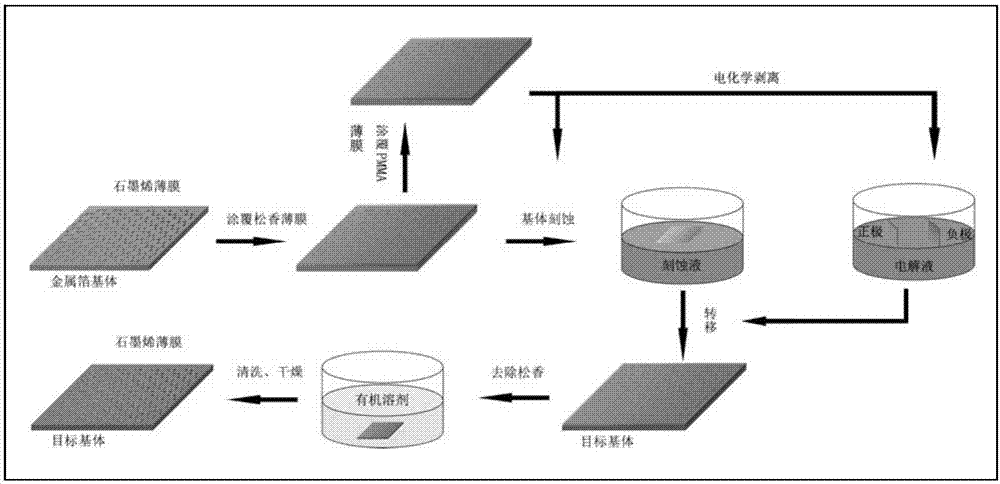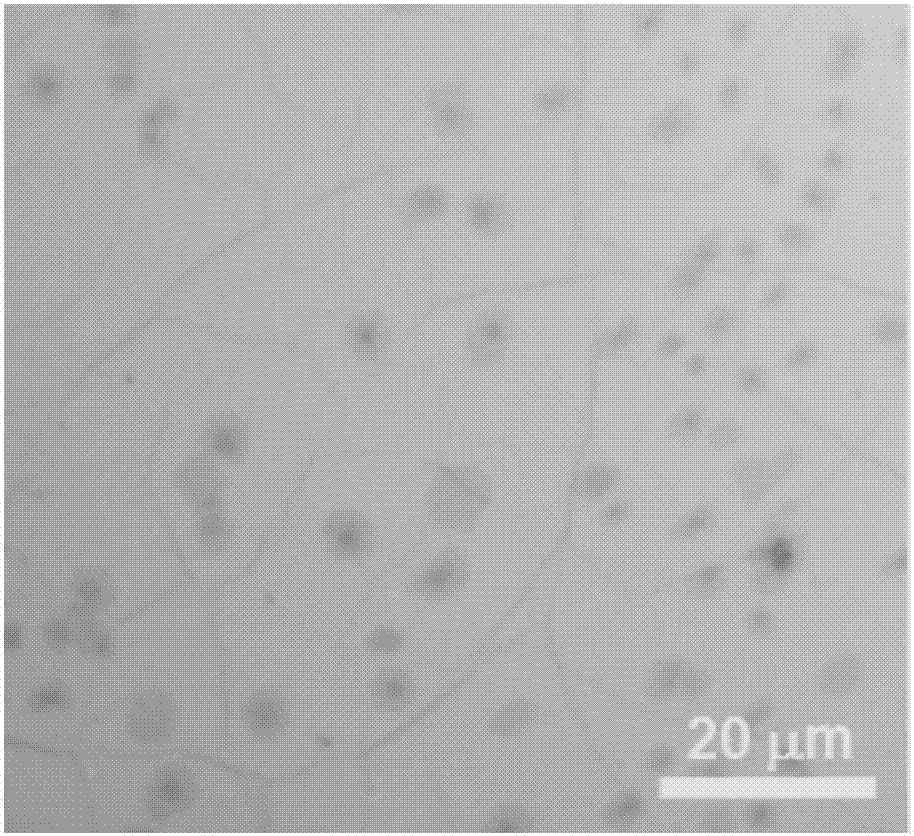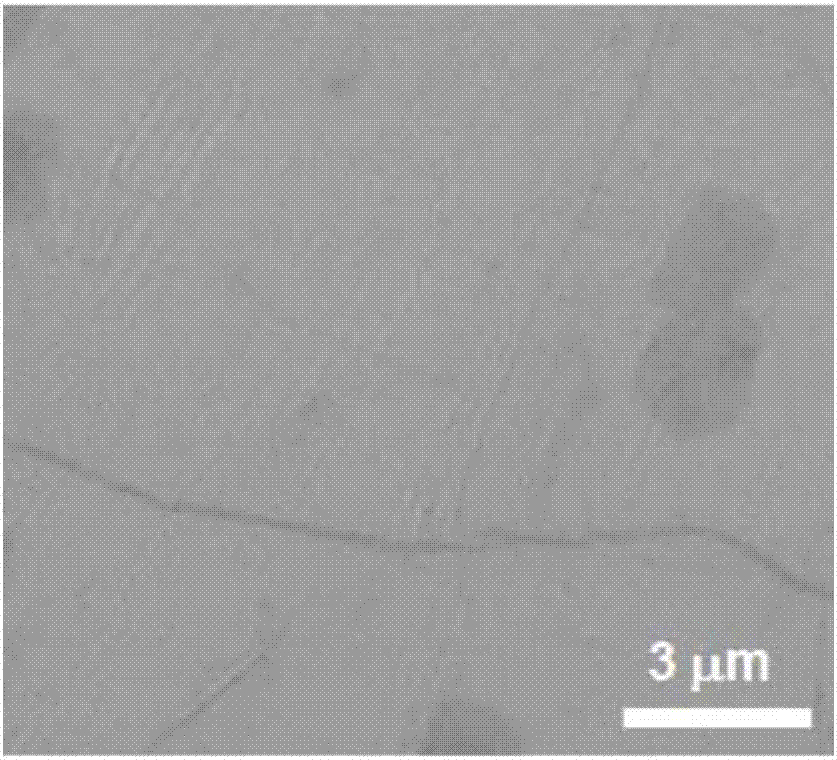Method for transferring graphene by using rosin resin as well as preparation method and application of transparent conductive graphene film
A transparent conductive film, rosin resin technology, applied in graphene, chemical instruments and methods, semiconductor/solid-state device manufacturing, etc., can solve problems such as hindering application, graphene damage, and difficulty in dissolving, and achieve high cleanliness. Transfer, improve Support strength, good for large area effect
- Summary
- Abstract
- Description
- Claims
- Application Information
AI Technical Summary
Problems solved by technology
Method used
Image
Examples
Embodiment 1
[0039] like figure 1 Shown, the method for rosin resin transfer graphene comprises the steps:
[0040] (1) First dissolve the natural rosin resin in absolute ethanol at a concentration of 1:1 (mass ratio), then spin-coat a layer of rosin with a thickness of 50 μm on the surface of single-layer graphene grown on Cu foil, and solidify at room temperature 2h, the rosin / graphene / metal foil composite was obtained.
[0041] (2) Etch the obtained rosin / graphene / Cu foil composite to remove the Cu foil by etching, move it to deionized water for repeated cleaning, and obtain the rosin / graphene composite.
[0042] (3) Transfer the rosin / graphene complex to the surface with SiO 2 Thin layer of Si sheet surface, heated at 40°C for 120min to remove graphene and SiO 2 Moisture between / Si makes them more tightly combined.
[0043] (4) Rosin / graphene / SiO 2 The / Si complex was sequentially washed with acetone and banana water to remove the rosin resin, and finally washed with deionized wa...
Embodiment 2
[0045] The difference from Example 1 is that in this example, hydrogenated rosin is dissolved in ethyl lactate at a concentration of 1:5 (mass ratio), and coated on 5-layer graphene grown on Ni, and the thickness of rosin is 30nm , cured at 100°C for 40 minutes; the target substrate used was GaN, and placed at room temperature for 5 hours to remove the moisture between the graphene film and the GaN substrate, so that the combination of rosin / graphene and the GaN substrate was tighter, and the obtained graphene surface The resistance is 125ohm / sq.
Embodiment 3
[0047] The difference from Example 1 is that in this example, the disproportionated rosin is dissolved in ethyl acetate at a concentration of 1:1 (mass ratio), and coated on the single-layer graphene grown on Cu, and the thickness of the rosin is 150 μm , cured at 180°C for 90min; the target substrate used was sapphire (Al 2 o 3 ), placed at room temperature for 1h to remove the moisture between the graphene film and the sapphire substrate, so that the combination of rosin / graphene and the sapphire substrate is more tightly, and the resulting graphene surface resistance is 550ohm / sq.
PUM
| Property | Measurement | Unit |
|---|---|---|
| Surface resistance | aaaaa | aaaaa |
| Surface resistance | aaaaa | aaaaa |
| Surface resistance | aaaaa | aaaaa |
Abstract
Description
Claims
Application Information
 Login to View More
Login to View More - Generate Ideas
- Intellectual Property
- Life Sciences
- Materials
- Tech Scout
- Unparalleled Data Quality
- Higher Quality Content
- 60% Fewer Hallucinations
Browse by: Latest US Patents, China's latest patents, Technical Efficacy Thesaurus, Application Domain, Technology Topic, Popular Technical Reports.
© 2025 PatSnap. All rights reserved.Legal|Privacy policy|Modern Slavery Act Transparency Statement|Sitemap|About US| Contact US: help@patsnap.com



